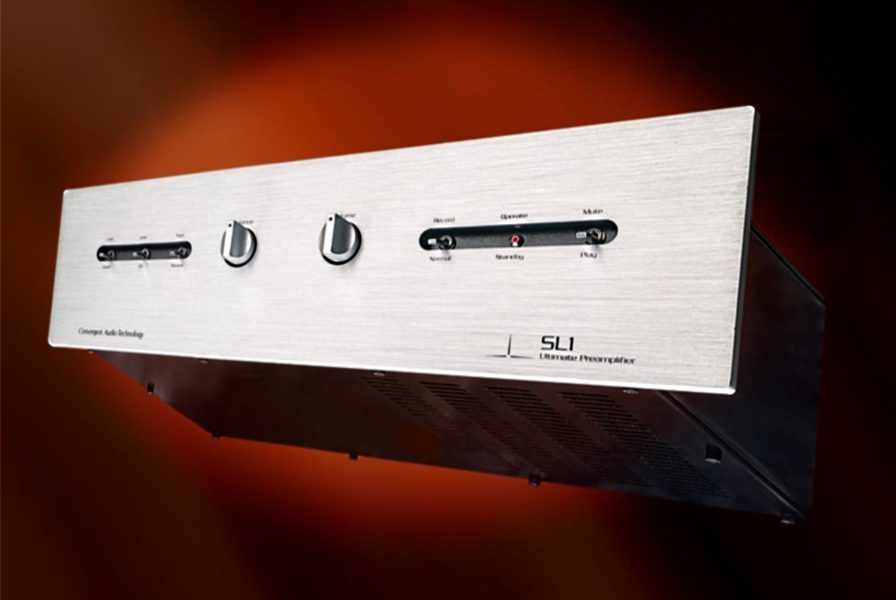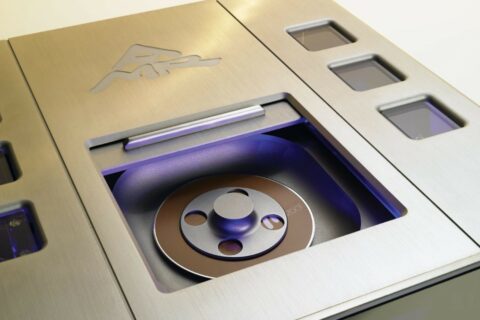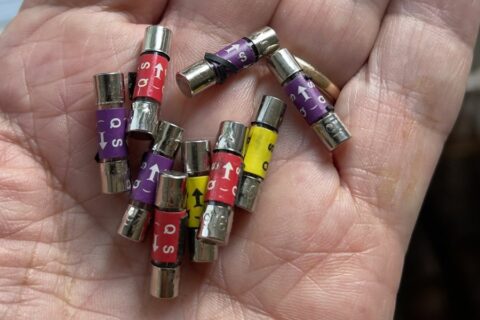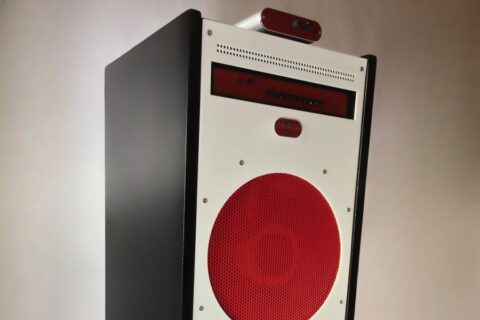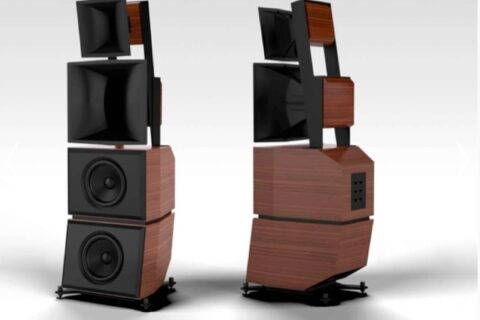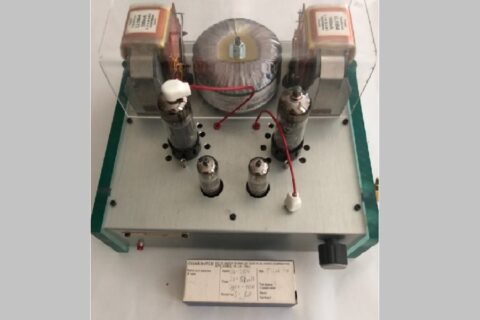It needs a true connoisseur to list all the past versions of the Convergent Audio Technology’s SL-1 preamplifier. No matter, right from the very first version 25 years ago it has been one of the most hailed preamplifier in the audio land. The SL-1 Renessaince is its latest incarnation.
Anybody who has been into this hobby long enough must have had heart-stopping moments, unexpected experiences, that have left a deep stain in the memory, and have enforced to question and re-evaluate one’s past conceptions of what is achievable and what not.
For me one such upsetting moment took place in summer 1997 when I spent two months in Hongkong by wandering around and making acquintance with the superfluous local supply of audio equipment. During that period I had numerous unforgettable hifi encounters. But one that really stopped me was when I was able to audition the Convergent Audio Technology SL-1 preamplifier.
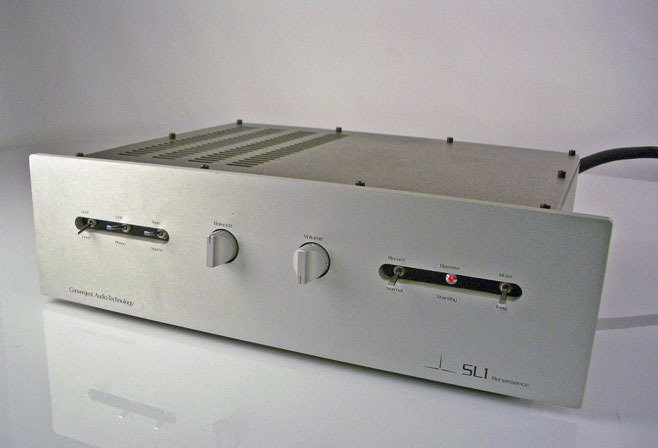
There was no shortage of contenders. I heard some of the greatest preamps on earth by Bruce Moore, Spectral Audio, Cello, Audio Research, Condrad Johnson, Sonic Frontiers, Jadis and many more. But apart from certain models of Jadis, only the CAT SL-1 left an indelible impression on me. It was perhaps the first time when I understood – or thought that I did – what it means when people say that an amplifier is silent and music emanates from a black background.
No wonder then that it was with a great anticipation and excitement that welcomed the CAT SL-1 Renessaince for a review. Would it be able to impress me again like it did almost 15 years ago? Or had the elapsed time just golden my memories?
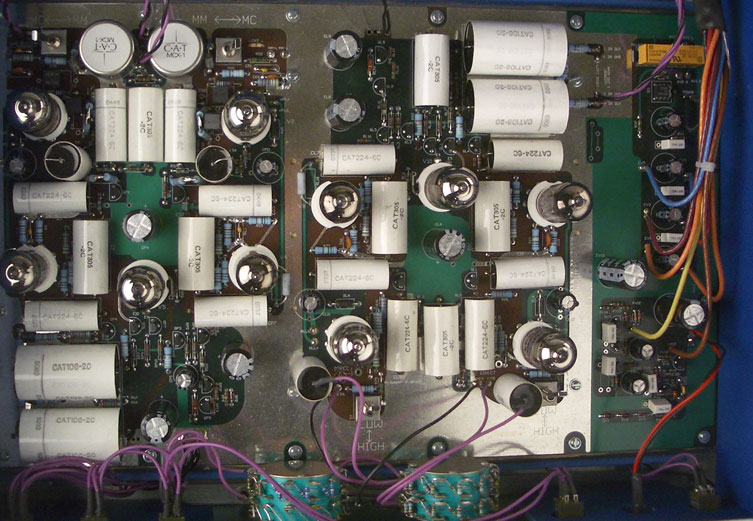
The same circuit year after year
The story of the SL-1 begun already in the mid 80s. It was then when Ken Stevens launched the first official version of his famous preamplifier. For the first 15 years or so the SL-1 was the company’s only product, and subject to constant changes and upgrades – relentness refinement – and new model tags. Gradually the firm got off the ground, the operation stabilized and other amplifiers started to emerge from the assembly line.
All these years the basic design and topology of the Sl-1 has remained more or less the same. From the Reference to the Signature, from the Ultimate to this Renaissance, not to speak of all the MkII’s and MKIII’s, the 2 x 5 tube design is still there: 2 x 6922 for the low noise input, 2 x 12AX7 for the high-gain stage, and 1 x 6922 for the cathode follower. One set of tubes is for the line stage, the other for the phono stage.
From the early days comes also the external, high-voltage power supply hard-wired to the preamp with an impractically thick and rigid cable. The power supply takes care of all rectification, regulation and noise filtering. It features, among other things, three independent fully regulated filament supplies, over 30 storage and by-pass capacitors and an isolation transformer.
A tradition is also the mechanically strong and heavy steel chassis. It is further reinforced with constrained layer damping to kill airborne vibrations. Try to lift the unit up. Not easy. Visco-elastic decoupling feet – apparently a loan from Rockport turntables – isolate the preamp from the structure-born (floor) vibrations for frequencies higher than 13Hz.
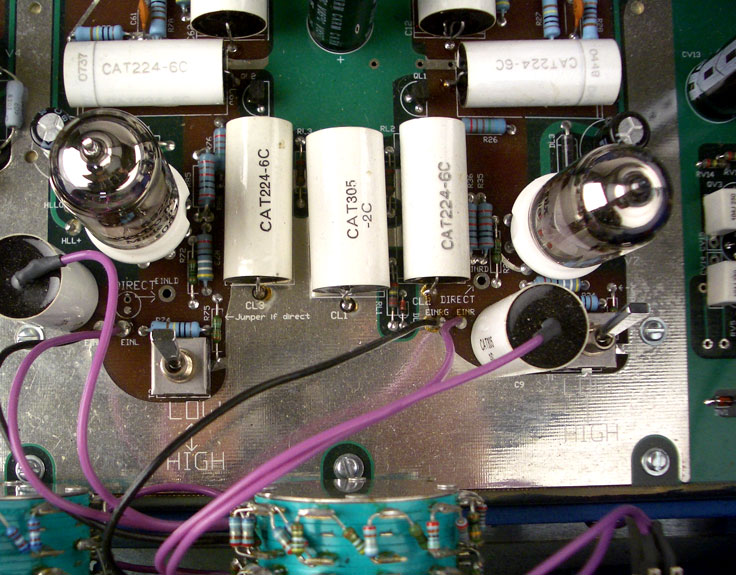
What’s new this time?
New with regard to what? The SL-1 Ultimate MkIII from 1999, I guess. An adjustable gain section, for instance. Instead fixed 26dB of the previous versions, the SL-1 Renessaince sports an internal switch to set the gain level either to 26dB or 15dB. The LOW gain position is handy when the SL-1 is used with high output sources or high sensitive speakers by moving the volume setting to the area where the dB steps are smaller. It is also little quieter while the HIGH position sounds more dynamic.
Another new feature is Audio/Video pass-through possibility. When the unit is turned off the LINE 1 input will be directly connected to MAIN OUT 2, and the SL-1 can be used in home theatre applications without disconnecting anything. The LINE 2 and MAIN OUT 1 are for two channel purists. The third novelty are the new MC stepup transformers about which a bit later.
Thanks to the new circuit-board layout the Renaissance’s bandwidth extends now to 800kHz compared to the previous 600kHz. The harmonic distortion is claimed to be < 0,0005% fot the line stage, and <0,001% for the phono stage; and the noise level 98dBA (high gain), 109dBA (low gain), and 97dBA phono. Output impedance is 100 ohms.
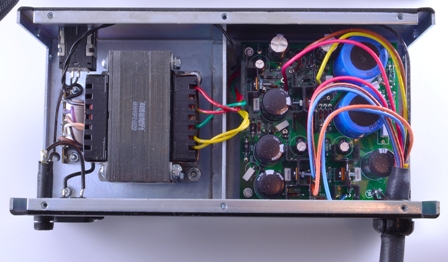
On duty
In addition to the two unbalanced outputs the SL-1 has two non-A/V line inputs, and MM/MC phono inputs all nicely and clearly placed on the rear panel. The front panel presents five cool toggle switches: mute, tape, line1/line2, standby, phono.
The stepped attenuator is discretely built with precision resistors. The rotary knob, also for the channel balance, feels rigid and is a joy to use. However, I would have preferred a tad smaller dB increments between the steps: sometimes the optimal volume setting seemed to be between 2 and 3 steps down from the clock 12.
To avoid hum and other noise the SL-1 is not connected to AC ground through its power cord. In fact, the CAT recommends that for the best sound each and every component should be left floating. It is, however, adviced that the SL-1 is connected for correct polarity. I did. Hum was never a problem.
However, no matter what I tried there was some slight background noise in all setups in which I tried the SL-1 despite its LOW gain setting. It’s hard to tell what was the cause as so many things can have an influence on such noise. How much? For example, in a quiet treated room with 30 dB of environmental noise, and with 90dB sensitive loudspeakers the noise or hiss was audible up to 1m from the speaker at the tweeter height. This was a little more than with the transistor amp under the same conditions. I could never hear the noise from the listening distance. The noise did not depend on the volume setting indicating that the source of the noise lies somewhere before the volume adjustment. When the SL-1 was muted, the noise disappeared completely.
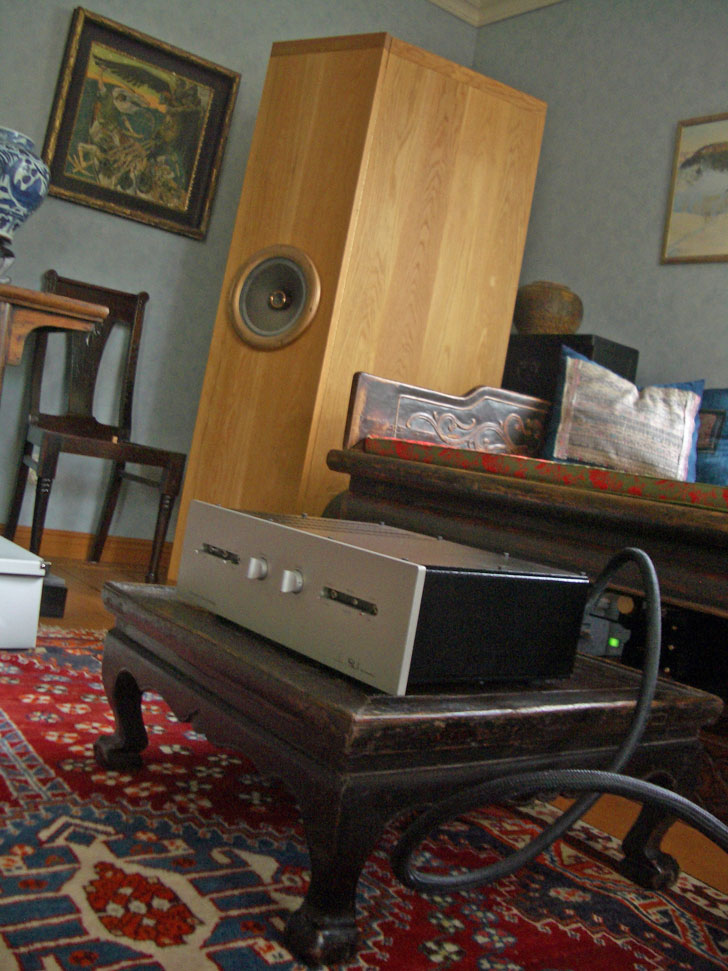 Icredible transparency
Icredible transparency
Independently of in which of the three systems I tried it, the sound of the SL-1 Renessaince showed an excellent transparency. By this I don’t mean three-dimensionality of the soundstage, nor high resolution or the presence of low-level details, although they are related. By transparency I mean the SL-1’s incredible ability to separate – create empty space and air – between the instruments within the soundstage. Furthermore, the centre image was strong, and the instruments tightly nailed down to their positions.
This was a single most phenomenal sonic feature of the SL-1 Renessaince, and also absolutely speaking one of the best performances I’ve ever heard in this regard. Since the SL-1 was not quite as dead silent as I remembered, I now believe that what I actually heard in Hongkong was the SL-1’s exceptional spatial delineation.
Despite the streched and stratified soundstage the SL-1 didn’t, quite correctly so, exaggerate the instruments’ size (guitars in particular are vulnerable to such exaggeration), and the sound wasn’t thrown over onto the listener’s face.
Another feature I liked a lot was how fast the SL-1 sounded, fast and rhytmic. If the Shindo Aurieges was good at in matters of changing tempo (rubato, for example), the SL-1 excelled in bringing forward slower and more sudden changes of dynamic level of the sound making the sound musically engaging and involving.
The toughest challenge was to determine the tone of the SL-1 sound. It wasn’t cold, it wasn’t warm. There was no sharpness, no edginess, no loose bass to round off the sound. I recently tested four tube preamps in similar conditions: EAR 834, McIntosh C220, Manley Shrimp, and Red Wine Audio Isabella. Of these, the SL-1 came tonally closest to Manley Shrimp’s sparkling clear sound but was more neutral. The SL-1 does not embellish the sound seductively like some Jadis preamps do. It prefers to be more impartial. It tells something that in the passby-test (see the box below) the SL-1 didn’t deviate from my passive preamp significantly.
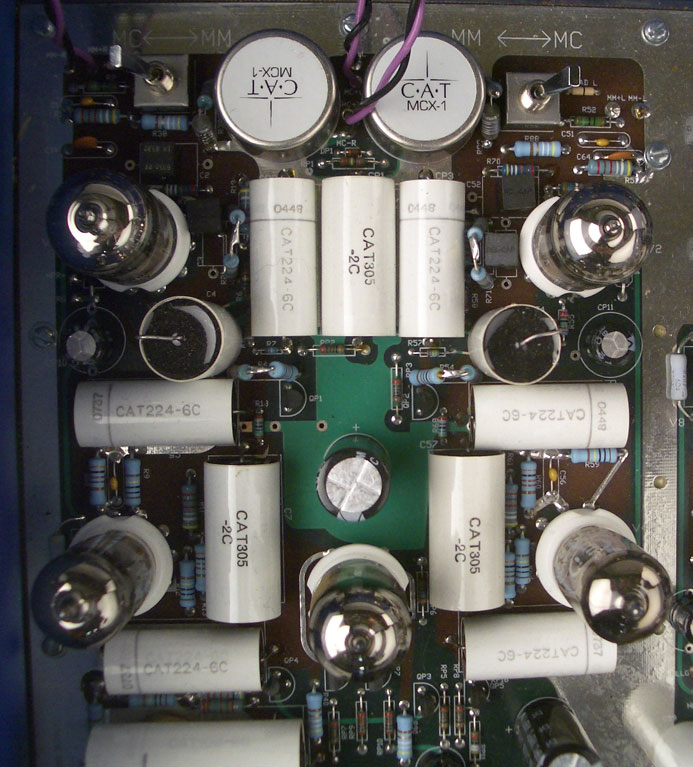
Phono-stage
All observations above refer to the sound from the line-level inputs. However, it was the SL-1’s phonostage, combining active and passive RIAA equalization, that once attracted much attention and had a central role in putting the SL-1 on the map.
The SL-1 got for the review was set to MC (switches inside the chassis) connecting – for the first time in the history of the SL-1’s – the MC inputs to low gain (11dB), high load impedance MC stepup transformers. Lower load impedances are provided in the form of RCA resistor plugs to be inserted into a pair of MC load jacks next to the phono input jacks. The high load impedance suited this time to the Denon DL-103. The turntable used in the test was Rega P7.
Despite the fact that I was not able to comprehensively evaluate the SL-1’s phono stage, I got a very high quality sound with the LPs I tried: flat, straight, correct, sensitive, detailed and transparent sound with good frequency extension and positive feeling. All that I missed was a tad more dynamics, for which the HIGH GAIN setting would have been more appropriate. It might have also helped to minimize the volume dependable noise. But all in all, I spend wonderful musical moments via the SL-1 phono stage with Don McLean, Joe Pass, Debussy, Andre Previn, Leonard Berstein and many others.
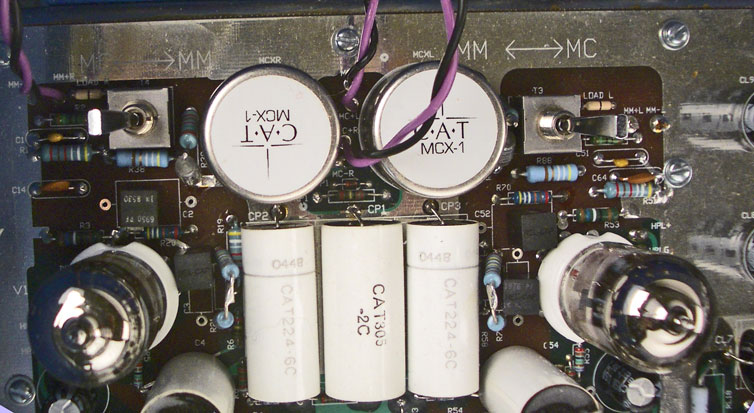
Conclusion
Circa 8000 – 10000 euros is not a little for a preamp without a remote control, with only two line level inputs (excluing the A/V inputs) and with no balanced outputs. This is a preamp for a classic two channel stereo hifi system. Period.
Yet there are factors that speak for the price and the cult position of the SL-1 among best preamplifiers. The tried and approved circuitry. The rigorous approach to parts quality. The super built quality. The flexible, meticulously realized phonostage. The excellent transparency of the sound in general.
The SL-1 Renessaince is available without the phono stage for a lower price. It is also available in a double-the-price highend version called Legend featuring once again the same circuit but everything else elevated to a higher level. If anything can be learned from the past 25 years it is that neither the Legend nor the Renessaince will be Ken Steven’s and CAT’s last word in the preamplifier design. The SL-1 transparency will continue to live.
The listening setups
By the mid-90s the SL-1 had already received some encouraging reviews by the The Absolute Sound and Stereophile. In those reviews as well as in later ones, the writers mainly compared the SL-1 to famous American preamps by Acoustic Research, Condrad Johnson and the like.
I wanted deviate from this tradition. I first compared the SL-1 Renessaince to my vintage Dynaco PAS 3 – the very same preamp, although heavely modified, that once made Ken Steven give up his FET-based preamps in favour of a tube preamp. The power amp was a 12W 6V6 PP amp, the CD player Audiomeca/Sentec combo, loudspeakers 6ohm/86dB mini monitors, cables by Kimber.
I secondly compared the SL-1 with Shindo Aurieges with an equally impressive signal-to-noise ratio. The power amp was 15W, EL84-based Shindo Montille, and the loudspeaker 16ohm/96dB PHY KM30 drivers in an open back baffle, a DIY CD player and PHY cables.
Thirdly, I used the SL-1 to replace the Accuphase E-408’s preamp section using its EXT.PRE. function, and listened for the changes. The loudspeaker was 4ohm, 90dB Dunlavy Athena, a mid-fi Marantz CD player, and Analysis Plus cables.
Bypass-testing a preamp
Some audio thinkers believe that the only valid procedure to evaluate a preamp is to carry out a so called bypass test whereby the preamp under evaluation, set for unity gain, is inserted in the signal path between the source/reference preamp and the power amp. The method is supposed to yield more meaningful results as compared to purely subjective evaluations.
I’m not fully convinced. To hear a difference is one thing, to describe it is another. The bypass test does not free the reviewer from the task of subjectively describing in what ways the sound was different, if it was. In doing so he or she must master relevant concepts and terms. It might be thought that if the bypass test could be arranged so that the listener could quickly switch between the reference preamp and the preamp under evaluation, the results were more trustworthy. Having been in numerous such tests I can confirm that it would not necessarily make life any easier.
Nevertheless, I carried out a bypass test by first connecting the CD player to the power amp (Accuphase) via my passive preamp, and listened. I then inserted the SL-1 set for unity gain in between the passive preamp and the power amp, and listened for the difference(s).
Not a big difference. In fact, the sound was surprisingly similar with respect to its tone, soundstage, and resolution. Perhaps the SL-1 Renessaince added some refined softness to the sound, and bettered the dynamics, but only by a little margin. There was no major difference in musical involvement though. Removing the SL-1 from the signal path resulted in a small loss in spatial analysis, and in the stability of the sound in general.
Although I didn’t find the method any more informative than normal plain comparisons, perhaps the fact that the SL-1 Renessaince didn’t much change the sound of a passive preamp can be interpreted as a sign of a quality active preamp.
CAT SL-1 – some specs
Tube complment: six 6922s and four 12AX7s.
Maximum gain at 1kHz: 25.8dB (High, line), 15.2dB (Low, line), 47dB (MM phono), 58dB (MC phono).
Gain tracking: 0.05dB (line, phono).
Frequency responses: 0.1Hz–800kHz, +0/–3dB (line); 20Hz–20kHz, ±0.1dB (RIAA phono, MC & MM).
Harmonic distortion at 1V: <0.0005% (line), <0.001% (phono). Slew rates: 15V/µs (line), 10V/µs (phono).
Maximum output at 1kHz: 50V RMS (line, phono).
Input overload (at 1kHz): 100V RMS (line), 250mV RMS (MM phono), 70mV RMS (MC phono).
S/N Ratio: 98dBA (High, line), 109dBA (Low, line, below 2V output), 97dBA (MM phono, below 10mV input), 107dBA (MC phono).
Channel separation: >90dB (line, phono).
Input impedance: 50k ohms, 20pF (line); 47.5k ohms, 180pF (phono) (user-adjustable).
Output impedance: 100 ohms (line), 50 ohms (phono).
Maximum load: <4000pF, >5000 ohms (line); <4000pF, >10,000 ohms (phono).
Dimensions (preamp): 490mm W x 135mm H x 310mm D.
Weight: 29,1kg


